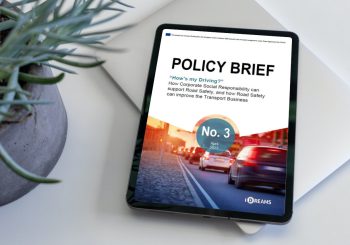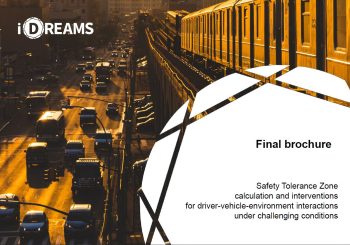About i-DREAMS
i-DREAMS is a 3-year project funded by the European Union’s Horizon 2020 research and innovation programme which aims to set up a platform to define, develop, test and validate a ‘Safety Tolerance Zone’ to prevent drivers from getting too close to the boundaries of unsafe operation by mitigating risks in real-time and after the trip.
Several factors of driver state negatively impact road safety, such as distraction (in-vehicle or external), fatigue and drowsiness, health concerns (e.g. illness, frailty, cognitive state) and extreme emotions (e.g. anxiety, stress, anger). Moreover, differences in socio-cultural factors are still among the main determinants of road risks. At the same time, technological developments make massive and detailed operator performance data easily available. For example via new in-vehicle sensors that capture detailed driving style and contextual data. This creates new opportunities for the detection and design of customised interventions to mitigate the risks, increase awareness and upgrade driver performance, constantly and dynamically. The optimal exploitation of these opportunities is the challenge that i-DREAMS faces.
The acronym “i-DREAMS” stands for a smart Driver and Road Environment Assessment and Monitoring System. The i-DREAMS consortium consists of 13 partners, researchers as well as industry partners, from 8 different countries.
What have we achieved during this innovative 4-year H2020 project? Find out now!
Discover our results!Insights on i-DREAMS

Third i-DREAMS Policy brief online!
Our third and final Policy Brief focuses on 'How's my driving?'. It sheds light on how Corporate Social Responsibility can support Road Safety, and how Road Safety can improve the Transport Business. This policy brief starts out by stating t...

i-DREAMS Final brochure
We reached the end of i-DREAMS and what a ride it was! Besides all the research that was carried out, we also put a lot of effort into making the research as accessible and understandable as possible for everyone interested in our project. This elaborate ...

i-DREAMS in short
Discover what i-DREAMS is all about in this comprehensible Pecha Kucha presentation! How can i-DREAMS help business owners to follow up on their drivers, optimize their operations and improve their results? Find out in just 20 slides! https://youtu.b...

